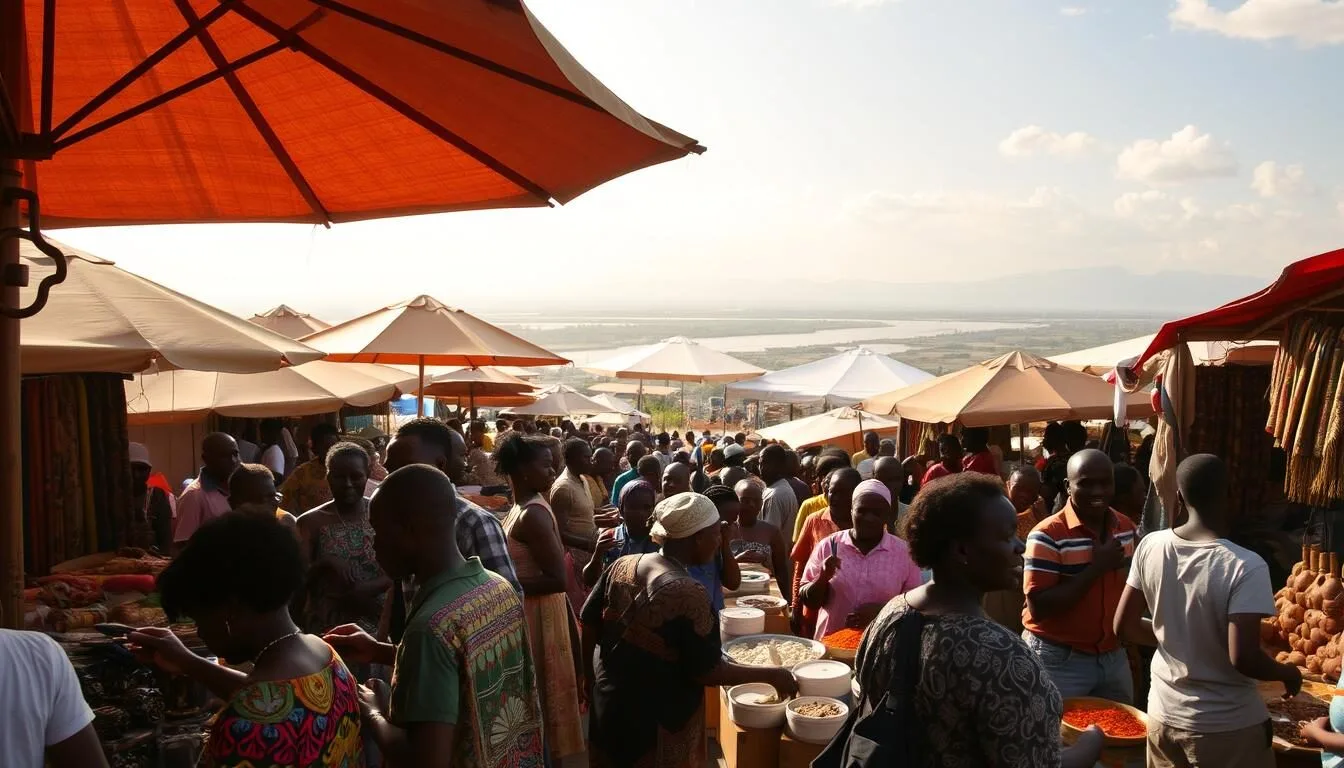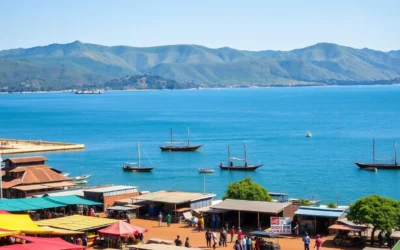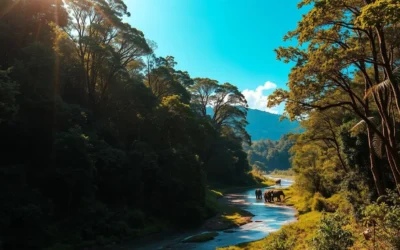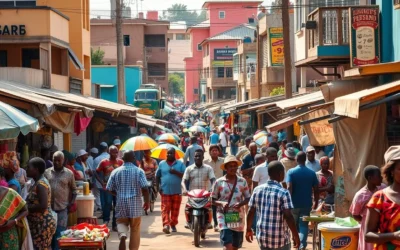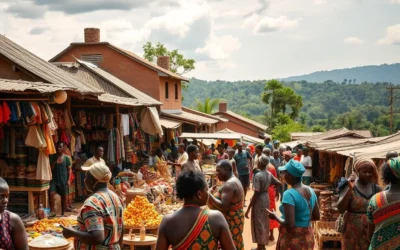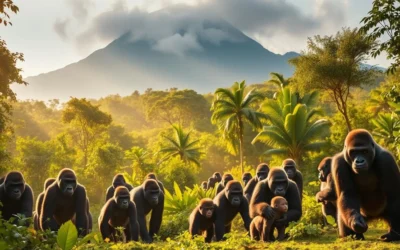✓ Accommodations ✓ Flights ✓ Rental Cars
You might not know much about Kananga, but this vibrant city is a cultural heritage hub in the heart of the Democratic Republic of Congo. With its rich traditions and warm hospitality, Kananga is an exciting destination for travelers seeking authentic cultural experiences.
As the former capital of Kasai-Occidental province, Kananga holds significant historical value, reflecting the country’s colonial and post-independence history. You can explore bustling marketplaces, take serene riverfront walks, and engage in meaningful interactions with the locals, immersing yourself in the life of this unique city.
Whether you’re drawn to its colorful markets or its historical significance, Kananga has something to offer every kind of traveler. Get ready to uncover the top attractions and activities that make this lesser-known destination special.
Discovering Kananga: The Heart of the Democratic Republic of Congo
As you explore Kananga, you’ll discover the vibrant culture and historical significance that define this city in the Democratic Republic of Congo. Located near the Lulua River, Kananga is a city that offers a unique blend of traditional and modern influences.
The city’s history is deeply rooted in its past as Luluabourg, the former capital of Kasai-Occidental province. This historical context has shaped Kananga into a regional hub for commerce, culture, and community life. You can explore the geographical and historical context of Kananga, understanding its evolution and significance in the region.
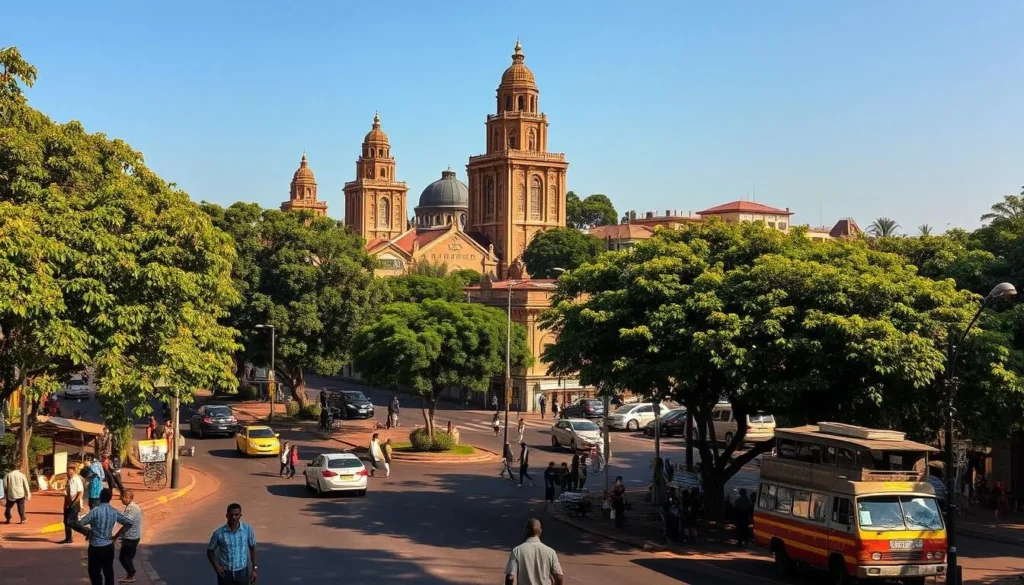
Kananga’s location near the Lulua River has played a crucial role in its development. The city’s cultural vibrancy and local artistry are evident in its daily life, making it a fascinating destination for cultural exploration.
Visit the Grand Marché de Kananga

As you step into the Grand Marché, you’re instantly surrounded by the sights, sounds, and aromas of daily life in Kananga. This bustling marketplace is the heart of the city, where hundreds of vendors gather daily to sell a wide array of goods, from vibrant textiles and spices to hand-carved crafts and fresh produce.
Shopping for Local Crafts and Souvenirs
The Grand Marché is an ideal place to find unique souvenirs that reflect the local culture. You can browse through stalls selling handmade goods, such as intricately carved wooden items and colorful fabrics. Shopping here not only allows you to pick up memorable souvenirs but also supports local artisans and the community.
Experiencing Daily Life Through the Market
Visiting the Grand Marché offers more than just shopping; it’s an immersive experience into the daily life of Kananga’s locals. You can observe the rhythms of the market, learn about traditional foods, and understand the economic importance of this marketplace for many families. It’s a chance to engage with the people and culture of the region, creating a memorable experience.
- Observe the rhythms of daily life in Kananga as locals gather to trade goods, exchange news, and maintain community connections.
- Learn about the traditional foods and ingredients sold at the market and how they form the foundation of local cuisine.
- Understand the economic importance of the market for families in Kananga.
- Discover how the market reflects seasonal changes in the region.
- Gain insights into social structures and interactions by observing how different generations and community members engage with one another.
Explore the Lulua Riverfront
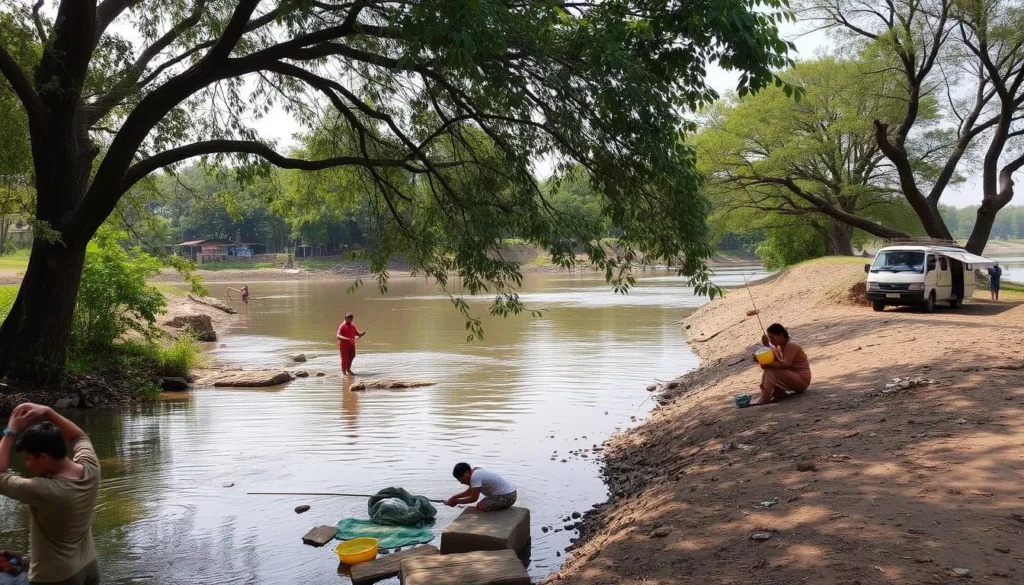
You can experience the peaceful side of Kananga by strolling along the Lulua Riverfront. The Lulua River offers a peaceful and scenic retreat from the energy of Kananga’s city center. Locals often gather here to fish, wash clothes, or picnic beneath the trees, giving you a glimpse into daily life in Kananga.
Scenic Walks Along the Riverbanks
A walk along the riverbanks gives travelers a deeper appreciation for the rhythms of life in Kananga. Whether you’re watching a colorful sunset or enjoying the cool breeze, it’s a tranquil spot to recharge and observe the slow-moving beauty of nature. You can take a leisurely stroll and enjoy the scenery.
Fishing and Boating Opportunities
The Lulua River provides various activities for visitors, including fishing and boating. You can:
- Learn about traditional fishing methods used by local fishermen on the Lulua River and how these techniques have been passed down through generations.
- Discover opportunities to join a fishing expedition with local guides who can share their knowledge of the river’s ecosystem and best fishing spots.
- Explore the possibility of arranging a boat ride in a traditional dugout canoe, hand-carved from local timber using time-honored techniques.
By engaging in these activities, you’ll gain a deeper understanding of the river’s importance to the locals and their way of life, enhancing your overall experience.
Attend the Festival of Traditional Dances
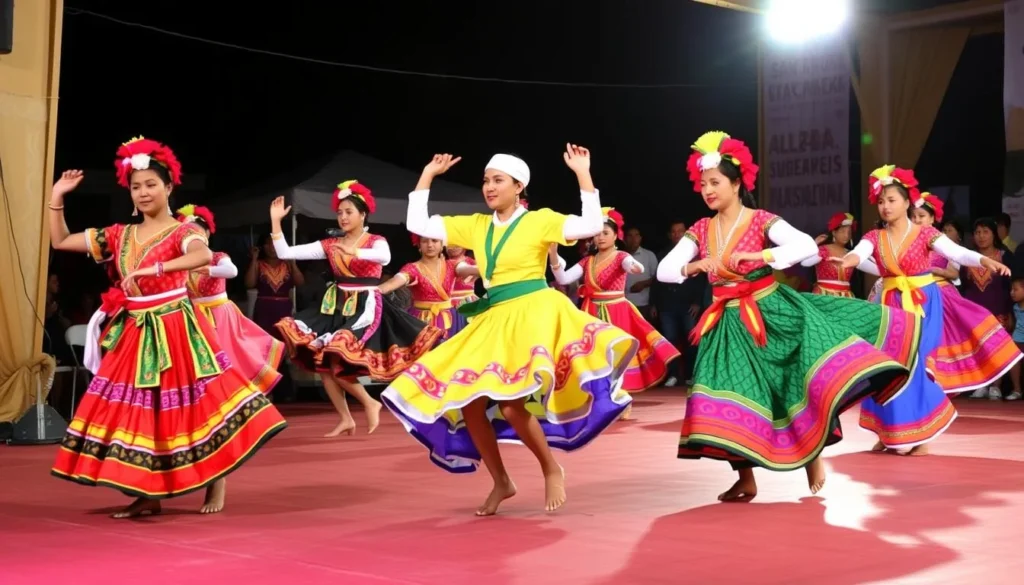
Immerse yourself in the vibrant culture of Kananga by attending the Festival of Traditional Dances, a spectacle that embodies the spirit of the Congolese people. This spectacular event is held several times a year, particularly during regional holidays and harvest seasons.
Understanding the Cultural Significance
The Festival of Traditional Dances is more than just a performance; it’s a celebration of Congolese identity. Dancers from nearby villages come together to perform ancestral routines accompanied by drums, bells, and chants, telling stories of harvest, war, or spirituality through centuries-old choreography and symbolic costumes.
Best Times to Experience Local Performances
To experience the Festival of Traditional Dances at its best, plan your visit during regional holidays and harvest times. These events are the perfect opportunity to witness the most elaborate and significant dance performances, giving you a deeper understanding of the local culture and its rich heritage.
Tour the Mikalayi Mission Historical Site
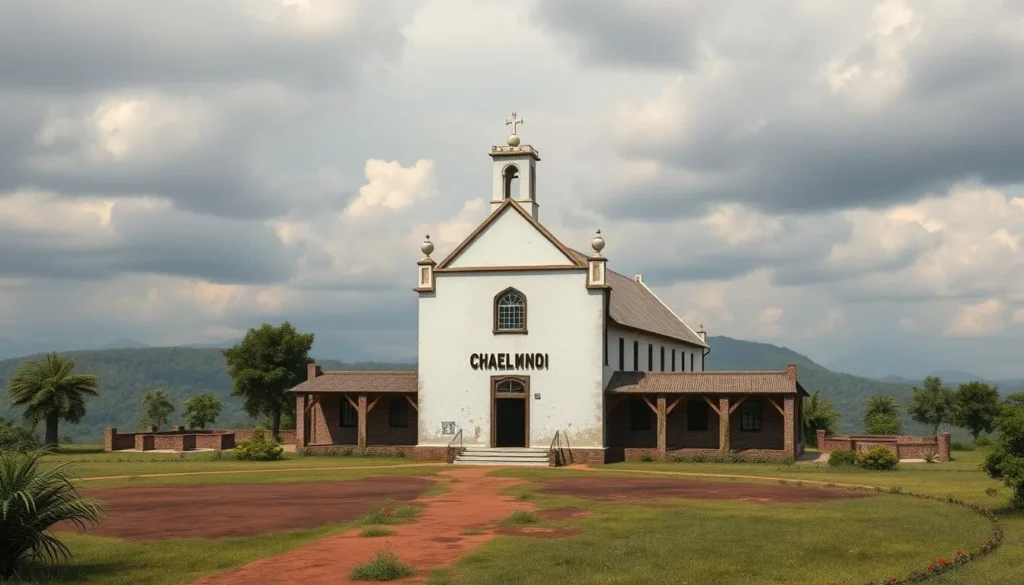
Just outside Kananga lies the Mikalayi Mission, a place of great historical importance and spiritual significance. Built by Catholic missionaries in the early 20th century, it became a major center for religious education and cultural exchange.
The Colonial History of the Mission
The Mikalayi Mission has a rich colonial history, having been established as a key location for religious and educational activities. Visitors can explore the original mission buildings and learn about the evolution of faith traditions in the region.
Architecture and Cultural Importance
The mission’s architecture is a blend of European design elements adapted to the local climate and available materials, making it a unique cultural heritage site. The spatial organization of the mission complex reflects its social and religious hierarchy, offering insights into the historical interactions between European and Congolese cultures.
Experience a Local Village Cultural Exchange
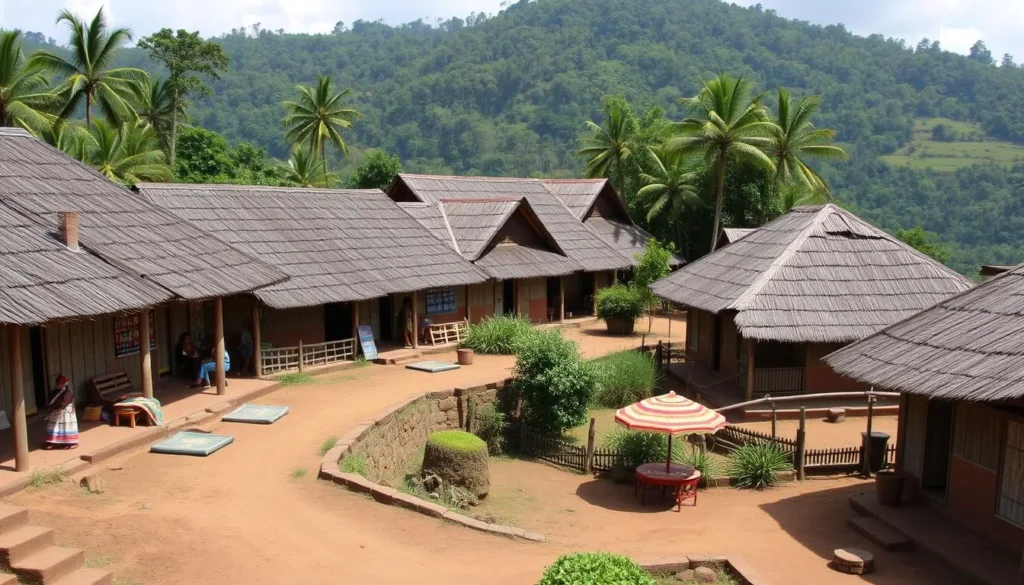
Immerse yourself in the local culture by visiting a nearby village in Kananga. These guided tours, often organized through local hosts or NGOs, provide a respectful and educational insight into rural life. You’ll have the opportunity to meet local farmers, artisans, and elders who are eager to share their knowledge about traditional practices.
Meeting Local Communities
During your visit, you’ll be welcomed into the community, where you can participate in hands-on demonstrations of traditional crafts such as basket weaving and pottery making. This is a great way to understand the local way of life and appreciate the community’s cultural heritage.
Learning Traditional Practices and Customs
You can gain valuable insights into traditional agricultural practices, food preparation methods, and the role of oral traditions in preserving community history. Additionally, you’ll learn about traditional healing practices and the medicinal plants used by local communities, enhancing your knowledge of the region’s heritage.
- Participate in traditional crafts like basket weaving and textile production.
- Learn about sustainable agricultural practices adapted to local conditions.
- Discover traditional food preparation and cooking techniques.
- Understand the significance of oral traditions in community life.
- Gain insights into traditional healing practices and medicinal plants.
Discover St. Clement Cathedral
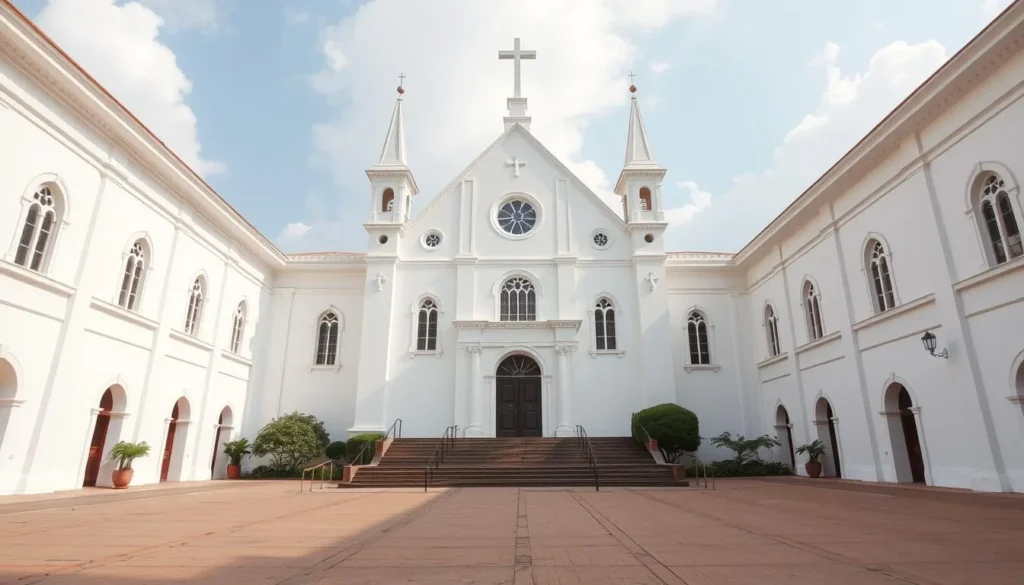
St. Clement Cathedral is a must-visit landmark in Kananga, offering a glimpse into the city’s rich history and spiritual life. This striking piece of architecture, built during the colonial era, continues to serve as a major place of worship and community gathering.
Architectural Highlights
The cathedral’s bold white facade, arched windows, and serene courtyard create a beautiful setting for reflection. Its architecture is a testament to the city’s cultural heritage, providing a unique experience for visitors.
Attending Services and Community Events
On Sundays and holidays, the cathedral comes alive with vibrant choirs, creating a moving and spiritual experience for anyone who attends. You can participate in regular services, respecting the local customs and traditions, and be a part of the community life. The cathedral also hosts various community events, including concerts and social service initiatives, making it a hub of community activity in Kananga, giving you a chance to spend quality time with the locals.
Enjoy Traditional Music at Local Venues
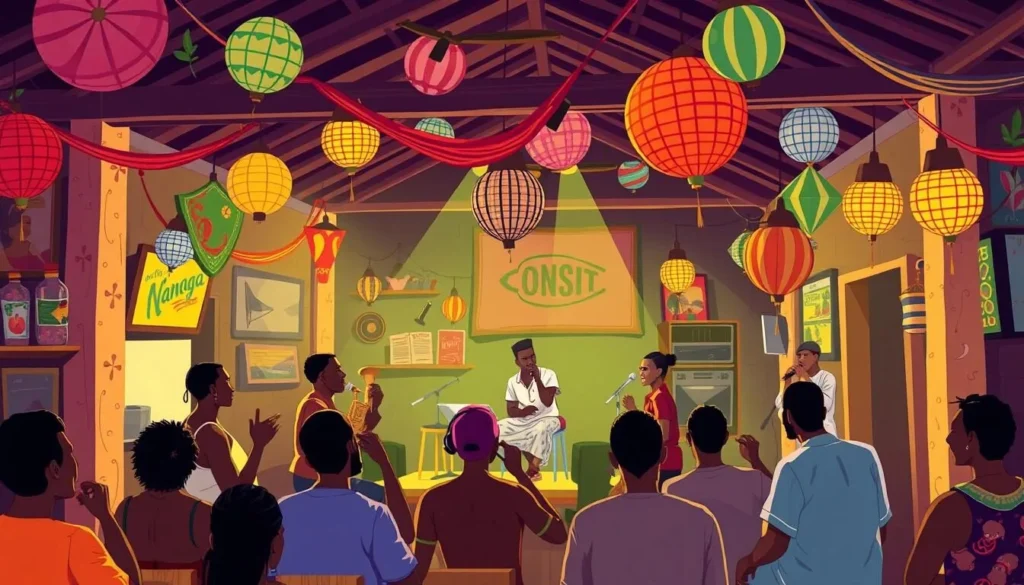
Immerse yourself in Kananga’s vibrant music culture by attending a live performance. Kananga’s nightlife might not be flashy, but it’s deeply soulful and incredibly welcoming. In local bars and cafés, especially on weekends, you can enjoy live Congolese music performed by talented local bands.
Popular Bars and Performance Spaces
Local bars and cafés are the heartbeat of Kananga’s music scene, offering an authentic experience of the city’s culture and traditions. You can find live music in various venues, each with its unique atmosphere and style.
Types of Music and Dance to Experience
From traditional drumming and folk songs to modern Congolese rumba, soukous, and ndombolo, the variety of musical styles reflects the rich heritage of the region. You’ll discover the connection between music and dance in Congolese culture, with specific dance movements corresponding to particular musical styles and rhythmic patterns.
Hike the Hills Near Kananga Airport
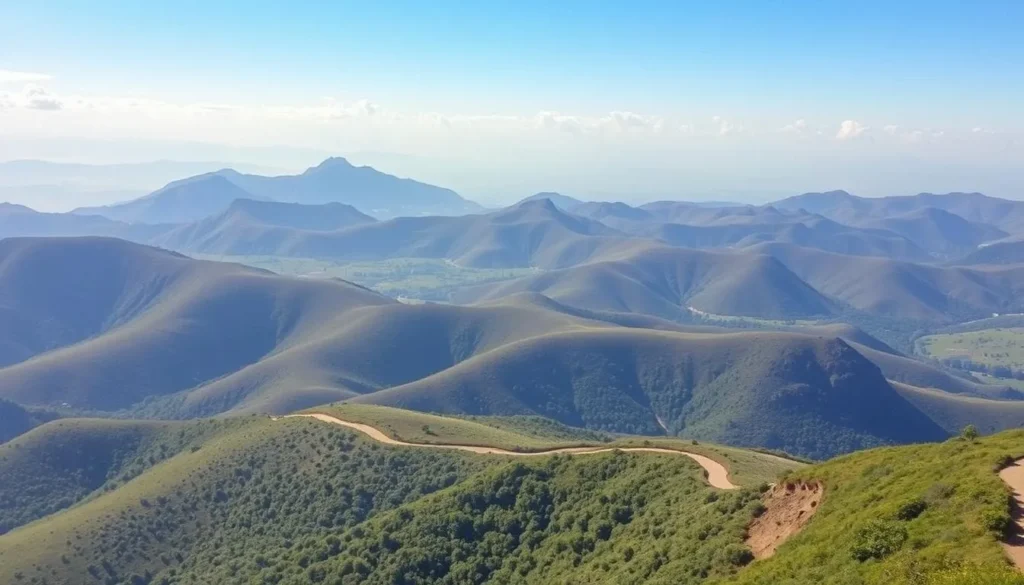
Just outside Kananga, near the airport, lies a hidden gem for hikers and nature lovers. The rolling hills offer scenic hiking opportunities with panoramic views of the surrounding countryside. These trails are mostly informal and used by locals, which means they’re quiet, natural, and rarely crowded.
Trail Difficulty and What to Bring
The trails near Kananga Airport are generally considered easy to moderate, making them accessible to hikers of various skill levels. You should bring comfortable walking shoes, water, and sun protection. The terrain includes fields, small homesteads, and patches of forest, so being prepared for varying conditions is key.
Panoramic Views of the City
As you climb, you’ll pass through diverse landscapes alive with birds and butterflies. The reward is a breathtaking view over Kananga that glows golden in the afternoon light. From these elevated perspectives, you can see the city’s layout, major landmarks, and the natural features that have shaped urban growth, appreciating the beauty and nature surrounding the city.
Visit the Kananga Artisans’ Collective
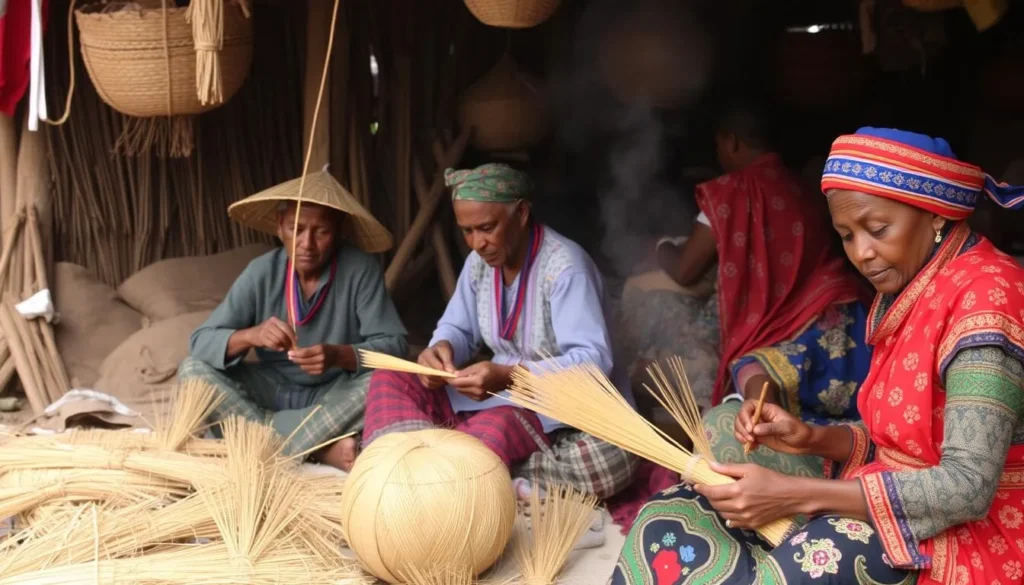
Immerse yourself in Kananga’s vibrant art scene at the Artisans’ Collective. Located in a modest workshop near the city center, this collective is home to a diverse group of skilled artisans, including sculptors, weavers, painters, and metalworkers.
Meeting Local Craftspeople
You will have the opportunity to meet local craftspeople and watch them shape wood into intricate figures or dye fabrics with rich natural colors. The artisans are passionate about sharing their skills and traditions with visitors.
Traditional Art Forms and Techniques
The Artisans’ Collective showcases the distinctive artistic traditions of the Kasai region. You can explore various media, from wood and metal to textiles and clay, and learn about traditional techniques such as lost-wax casting and natural dyeing processes. Many of the pieces created are available for purchase, making for meaningful souvenirs that directly support the local economy and help preserve the region’s cultural heritage and traditions.
Try Local Cuisine at Family-Owned Restaurants

Kananga’s culinary scene is a hidden gem, offering a taste of authentic Congolese culture. As you explore the city, you’ll discover that its family-owned restaurants are a treasure trove of local flavors. Meals here are often made from scratch using seasonal ingredients, making each dish a reflection of the land and its people.
Must-Try Dishes in Kananga
When dining in Kananga, be sure to try some of the local specialties. Fufu, a staple made from cassava or yams, is often served with a variety of sauces, including those made from cassava leaves. Other must-try dishes include goat stew and grilled tilapia, both bursting with flavor and showcasing the city’s culinary diversity.
Best Local Eateries
To experience the authentic taste of Kananga, look for family-owned restaurants in residential neighborhoods. These eateries are often filled with locals, indicating both quality food and fair prices. By dining at these establishments, you’ll not only enjoy delicious meals but also gain insight into the local culture and way of life.
Day Trip to Kahuzi-Biega National Park
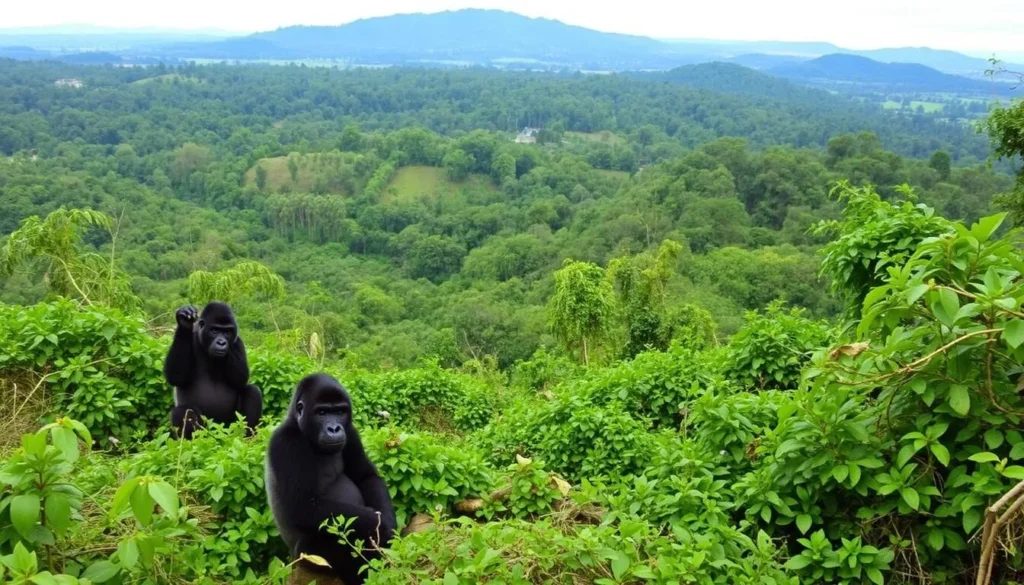
Kahuzi-Biega National Park, a UNESCO World Heritage Site, is within reach on a day trip from Kananga. As a destination for wildlife enthusiasts, it offers an unparalleled experience with its diverse flora and fauna.
Lowland Gorilla Trekking
One of the main attractions of Kahuzi-Biega is the opportunity for visitors to trek and observe lowland gorillas in their natural habitat. With around 250 Eastern lowland gorillas, the park provides a unique chance to see these magnificent creatures up close.
Planning Your Visit
To travel to Kahuzi-Biega National Park on a day trip, it’s essential to plan ahead. This includes securing gorilla trekking permits in advance, packing appropriately for the trek, and understanding the best times to visit based on weather and gorilla movement. By doing so, you can ensure a smooth and enjoyable trip.
Explore the Vibrant Nightlife of Kananga

As the sun sets, Kananga transforms into a vibrant city with a nightlife that’s worth experiencing. You can enjoy a unique blend of local culture and modest entertainment options that reflect the lifestyle and traditions of its residents.
Popular Evening Venues
Evenings in Kananga often start with social gatherings at local bars and restaurants, where you can enjoy Congolese music, including rumba and soukous, played live or through vibrant sound systems. These venues offer a great way to experience the local culture.
Safety Tips for Night Outings
To make the most of your nightlife experience, it’s essential to be aware of your surroundings. Here are some safety tips:
- Stick to recommended areas for evening activities and avoid those best avoided after dark.
- Use reliable transportation options like taxis or motorbike taxis, or arrange private transportation through your accommodation.
- Secure your belongings by carrying minimal valuables and keeping important items safe.
- Be mindful of cultural expectations regarding dress and interactions to blend in.
- Go out with trusted local companions who can help navigate unfamiliar situations.
By following these tips, you can have a safe and enjoyable night out in Kananga, making your travel experience even more memorable for visitors to the city.
Photography Opportunities in Kananga, Democratic Republic of the Congo: Best Things to Do – Top Picks
As you explore Kananga, you’ll discover a wealth of photography opportunities that showcase the city’s urban landscapes, cultural events, and daily life. The city offers a unique blend of traditional and modern elements, making it a fascinating subject for photographers.
Urban Landscapes and Architecture
Kananga’s urban landscapes are characterized by vibrant markets, colonial-era architecture, and modern infrastructure. You can capture the city’s dynamic atmosphere by photographing its bustling streets, historic buildings, and scenic riverfront. 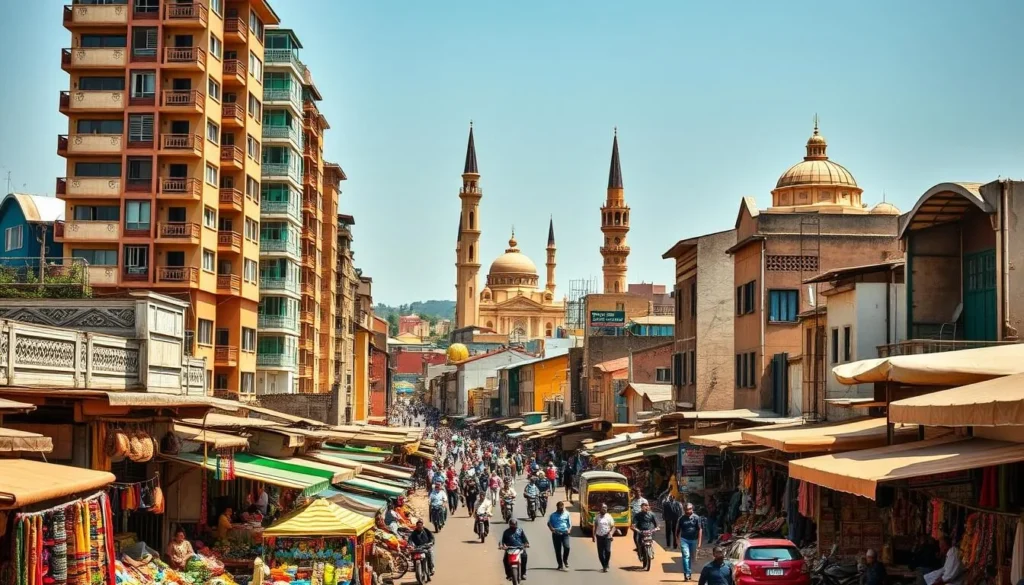
| Location | Photography Opportunities |
|---|---|
| Grand Marché de Kananga | Vibrant market scenes, local crafts, and traditional clothing |
| Lulua Riverfront | Scenic views, fishing activities, and riverbank life |
Capturing Cultural Moments
Kananga is rich in cultural heritage, with numerous opportunities to capture traditional practices, music, and dance. You can photograph local artisans at work, attend cultural festivals, and document daily life in the city. By building rapport with your subjects, you can create meaningful and natural images that convey the richness of the local culture and experience the warmth of its people.
Best Seasons to Visit Kananga
To make the most of your visit to Kananga, it’s essential to know the best seasons to explore this vibrant city. Understanding the local climate and cultural events can significantly enhance your travel experience.
Weather Patterns and Climate
Kananga has a tropical climate with distinct wet and dry seasons. Temperatures range from 20°C to 30°C throughout the year. The wet season, from October to May, is characterized by high humidity and substantial rainfall, while the dry season, from June to September, offers lower humidity and reduced precipitation.
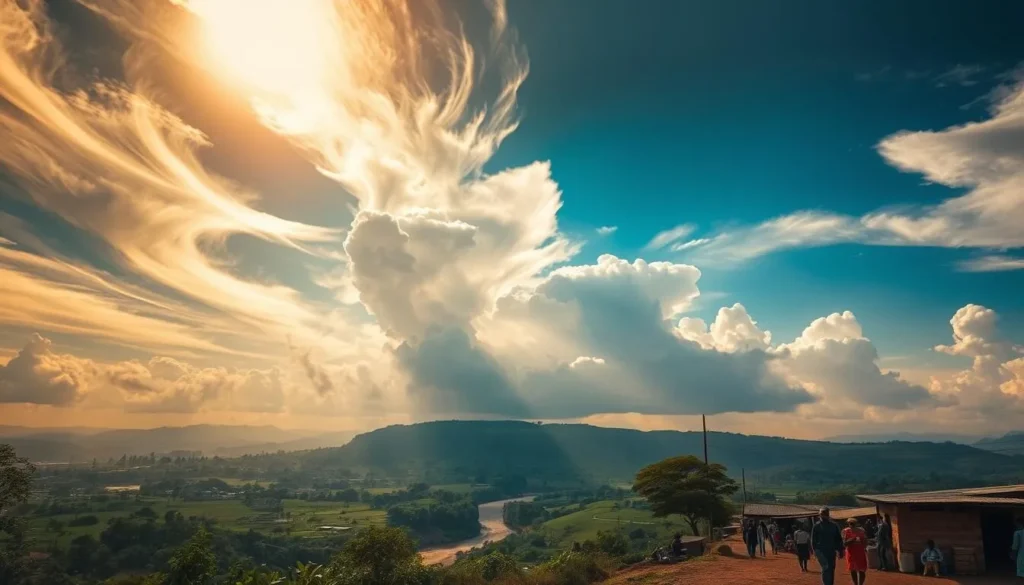
Festival and Event Calendar
Kananga’s cultural calendar is filled with events tied to seasonal changes, harvest times, and religious celebrations. You can experience traditional dance festivals, religious observances, and contemporary events like music festivals. Planning your visit around these events can add depth to your cultural experience. Some festivals follow lunar or agricultural calendars, so it’s worth researching to catch the events that interest you.
Practical Travel Tips for Visiting Kananga
To make the most of your visit to Kananga, it’s essential to be prepared with the right information. As you plan your trip, consider the following practical tips to enhance your travel experience in this vibrant city.
Accommodation Options
Kananga offers a range of accommodations to suit different budgets. You can choose from local guesthouses, mid-range hotels, or luxury resorts. When selecting your accommodation, consider its proximity to major attractions and its reputation among previous visitors.
- Research local options online or through travel guides.
- Book in advance, especially during peak travel seasons.
Transportation Around the City
Navigating Kananga can be done through various means of transportation. The city is relatively compact, making it accessible on foot or by local taxis. For longer distances or a more comfortable ride, consider hiring a private car service. Understanding the city‘s layout will help you move around more efficiently.
- Familiarize yourself with local taxi services or ride-sharing apps.
- Consider renting a car for more flexibility.
Safety Considerations
Staying safe while traveling in Kananga involves being aware of your surroundings and taking necessary precautions. Keep your valuables secure, avoid traveling alone at night, and stay informed about local conditions. By being mindful of these factors, you can have a positive and enjoyable experience in Kananga.
- Stay updated on local news and safety advisories.
- Keep your embassy’s contact information handy.
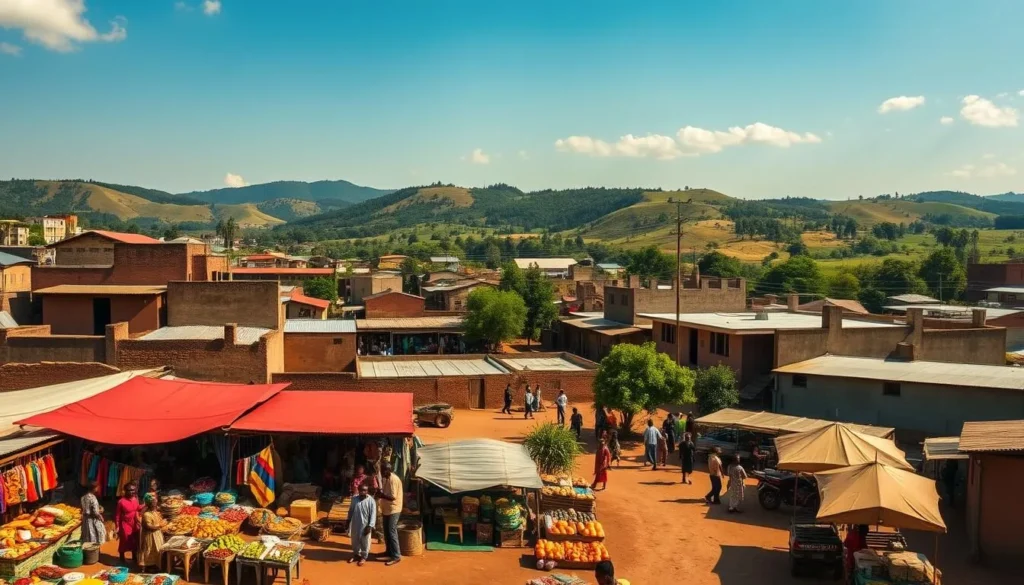
Conclusion
Your trip to Kananga will be a journey into the heart of the Democratic Republic of Congo. This city offers a unique blend of cultural experiences, warm hospitality, and insights into local life. From the vibrant Grand Marché de Kananga to the scenic Lulua Riverfront walks, Kananga’s diverse attractions make it a worthwhile destination. You’ll have the opportunity to engage with local communities preserving rich cultural traditions, attend traditional dance festivals, and encounter skilled artisans. While visiting a less-developed destination like Kananga may present some challenges, the rewards of genuine cultural exchange and unforgettable experiences far outweigh them. As you leave Kananga, you’ll appreciate its role as a window into Congolese life, history, and culture, encouraging respectful and mindful travel that benefits both visitors and the local community, making your trip truly enriching.
The above is subject to change.
Check back often to TRAVEL.COM for the latest travel tips and deals.
